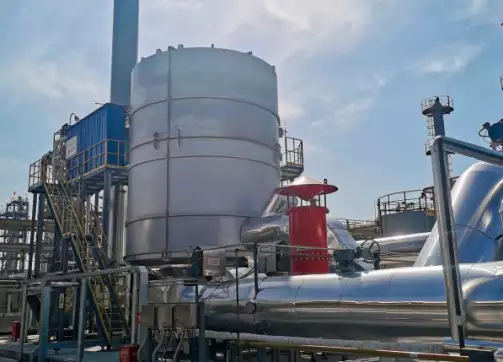How to Optimize the Performance of an RTO for Air Pollution Control?
介紹
Regenerative Thermal Oxidizers (RTOs) are widely used for controlling air pollution caused by industrial processes. RTOs are effective in removing Volatile Organic Compounds (VOCs) and Hazardous Air Pollutants (HAPs) from the exhaust stream. However, to ensure optimal performance, the RTO must be well-designed, well-maintained, and operated correctly. In this blog post, we will discuss how to optimize the performance of an RTO for air pollution control.
Design Considerations
When designing an RTO, several factors must be taken into account to ensure its optimal performance. These include the following:
Bed Depth
The bed depth of the RTO has a significant impact on its performance. A shallow bed depth can lead to incomplete combustion, while a deep bed depth can cause high pressure drop and excessive maintenance requirements.
Heat Recovery Efficiency
Maximizing heat recovery efficiency is crucial in reducing operating costs and minimizing the environmental impact of the RTO. The RTO should be designed to recover as much heat as possible from the exhaust gases.
Flow Distribution
Uniform flow distribution is essential for the RTO to function correctly. Non-uniform flow distribution can lead to hotspots, which can cause premature equipment failure and reduced efficiency.
Maintenance and Operations
To ensure optimal performance, regular maintenance is required. The following maintenance activities should be performed:
Inspection of Ceramic Media
The ceramic media in the RTO must be inspected regularly to ensure that it is not damaged, cracked, or contaminated. Damaged or contaminated media can lead to reduced efficiency and increased emissions.
Cleaning of Burner Nozzles
The burner nozzles must be cleaned regularly to ensure that they are not clogged or damaged. Clogged or damaged nozzles can lead to reduced efficiency and increased emissions.
Calibration of Instruments
The instruments used to monitor and control the RTO must be calibrated regularly to ensure accuracy. Inaccurate instruments can lead to reduced efficiency and increased emissions.
Performance Monitoring
To ensure optimal performance, the RTO must be monitored continuously. The following parameters should be monitored:
Thermal Efficiency
Thermal efficiency is a measure of how effectively the RTO is converting heat energy into combustion. It is essential to monitor thermal efficiency regularly to ensure that the RTO is operating efficiently.
Pressure Drop
Pressure drop is a measure of the resistance to airflow through the RTO. Monitoring pressure drop is essential to ensure that the RTO is operating within design parameters.
NOx and CO Emissions
NOx and CO emissions are two of the most critical pollutants produced by the RTO. Monitoring these emissions regularly is essential to ensure that the RTO is operating within acceptable limits.
結論
In conclusion, optimizing the performance of an RTO for air pollution control requires proper design, regular maintenance, and continuous performance monitoring. By following these guidelines, the RTO can operate efficiently, reduce emissions, and minimize operating costs.
公司簡介
We are a high-end equipment manufacturing enterprise specializing in comprehensive treatment of volatile organic compounds (VOCs) emissions and carbon reduction energy-saving technology. Our core technologies include thermal energy, combustion, sealing, and self-control. We possess capabilities in temperature field simulation, air flow field simulation modeling, ceramic heat storage material performance, selection of zeolite molecular sieve adsorbents, and high-temperature incineration and oxidation of VOCs organic substances.
團隊優勢
We have an RTO technology research and development center and an exhaust gas carbon reduction engineering technology center in Xi’an, as well as a 30,000m2 production base in Yangling. We are a leading manufacturer in terms of global RTO equipment and zeolite molecular sieve rotary wheel equipment sales. Our core technical team comes from the Aerospace Liquid Rocket Engine Research Institute (Aerospace Sixth Institute). We currently have more than 360 employees, including over 60 research and development technical backbone staff. Among them, there are 3 senior engineers at the research fellow level, 6 senior engineers, and 47 thermodynamics Ph.D. holders.
核心產品
Our core products are the Rotary Valve Regenerative Thermal Oxidizer (RTO) and zeolite molecular sieve adsorption and concentration rotary wheel. Combined with our expertise in environmental protection and thermal energy system engineering, we can provide customers with integrated solutions for comprehensive treatment of industrial waste gas under various operating conditions and carbon reduction through thermal energy utilization.
認證、專利和榮譽
- 智慧財產權管理系統認證
- 品質管理系統認證
- 環境管理系統認證
- 建築業企業資質
- 高新技術企業
Patents:
- Rotary Valve for Thermal Storage Oxidation Furnace Patent
- Rotary Zeolite Incineration Device Patent
- Disc-type Zeolite Rotary Wheel Patent

How to Choose the Right RTO Equipment
- 確定廢氣的特性
- Understand the local regulations and emission standards
- 評估能源效率
- 考慮維
- 進行預算和成本分析
- 選擇合適的RTO類型
- 考慮環境和安全因素
- 執行效能測試和驗證

RTO Air Pollution Control Service Process
- Initial consultation, on-site inspection, and needs analysis
- 解決方案設計、模擬和審查
- 客製化生產、品質控制和工廠測試
- 現場安裝、調試、培訓服務
- 定期維護、技術支援、備件供應
We are a one-stop solution for RTO air pollution control, providing customized RTO solutions tailored to our clients’ needs. Our professional team is dedicated to delivering high-quality services.
作者:米婭
